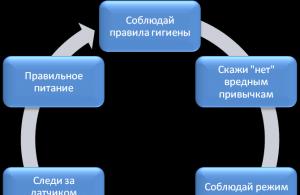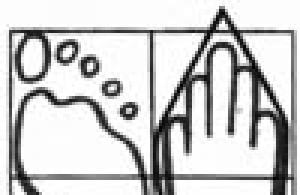
How to turn it on full go to tuareg
Basic principles of organizing permanent all-wheel drive

The torque that the engine develops is transmitted through the AO to the gearbox equipped with a center differential, and from there through the power take-off shafts to the differentials of the front and rear axles.
For all models discussed in this manual, four-wheel drive is not emphasized. The design of the two-stage transmission cabinet provides for a center differential lock mechanism. The gearbox is fully synchronized, so gear shifting can be done while driving. There are also mechanisms for forced locking of both differential transverse axles.
Differential Lock Order
The differential lock is controlled by the built-in central part of the dashboard car switches (see section Controls and interior equipment) Blocking must be performed strictly in the following sequence: DIFFERENTIAL REAR INTERACTION BASE. The differential lock should only be engaged in hard-to-reach places, when driving on water or on roads covered with snow, ice or mud.
Unlike all-wheel drive vehicles, torque is transmitted to both axles constantly. The redistribution of power between the axles provides a central differential. The tight grip between the axles needed to achieve maximum traction is provided by this differential lock.
The benefits of permanent four-wheel drive include stable handling characteristics of the car, the ability to use the bottom row of the gearbox without locking, and therefore on any road without traction restrictions. Moreover, such a car is always in a state of “high alert”. Forced differential locks can be used as an additional way to increase traffic in case of problems on the road. It should be noted that maximum traction in the event of poor traction can only be obtained by forced locking, since any automation involves wheel slip (in the absence of slip, the lock does not work), which will certainly lead to a loss of traction.
Not without constant full drive unit and disadvantages. After all, such a machine must rotate all cardan shafts and axles. As a result, on the pavement, its transmission is as noisy as an all-wheel drive with the wheel clutches engaged, and also increases fuel consumption for an all-wheel drive.
However, permanent all-wheel drive still brings more positives than negatives, especially for true SUVs.
Differential lock
c - pressure blocks for switching the differential lock of the front and rear axle blocks
Functional diagram of the differential lock hydraulic drive
2 - Blocks of pressure for switching the blocking of the differential blocks of the front and rear axles
3 - cylinder for switching the differential lock of the front (VA) and rear (HA) axles
a - hydraulic fluid flow path
b - schemes of the working cylinder
Tuareg castles
Best four-wheel drive. We find out which all-wheel drive system keeps the car better on slippery roads.
Tuareg the button for switching the locks of the rear and center differentials flashes
Volkswagen Touareg 4×4 SUVs.
Hydropneumatic pressure design
1 - air access
2 - to the hydraulic reservoir
4 - Suction fittings (vacuum)
Location of mechanical components for controlling wheel differentials
a - crankcase fan
Location of mechanical components for central differential lock control
1 - switch fork
Read also
Replacing the fuel filter with a VAZ 2110, VAZ 2111, VAZ 2112 It can be either a coarse fuel filter or a narrow one, both filters (in other words, a coarse filter and a narrow one) are found in cars of the tenth family, but only if the car has an injection type ...


Volkswagen Group replaced Audi CEO Rupert Stadler with brand sales director and marketing director Abraham Schott following Stadler's arrest over the diesel scandal. Stadler was arrested yesterday and has been on Au...


Who owns a car with reverence and creativity approaches the choice of engine oil regardless of any manufacturer's instructions. Firstly, of course, to save money, and secondly, to increase the resource, power and reduce consump...


Where is the ground oil filter cruiser 200 Changing engine oil and oil filter Constant and fairly frequent engine oil changes are one of the main preventive maintenance procedures for a car that lie within the qualification of...


Every vehicle owner should know how to properly adjust the mirrors in the car, because the safety of all road users depends on it. These devices control the situation on the road. It should be noted that...


In fact, I will describe the problem of how it happened, how I determined it and how I solved it, and hopefully this will help to avoid unnecessary actions and get out of trouble in the shortest possible time. After an hour, I get out of the car, insert the key (fish), immobilize ...
2 - slave cylinder
Pneumatic Differential Lock Control Layout
M14/1 - Auxiliary vacuum pump (petrol models)
67 - Vacuum pump (diesel models)
a - vacuum receiver (0.4 l)
Functional diagram of the pneumatic drive for blocking the differential blocks on DIESEL models (the locks of the axle differential and the rear axle wheel switches are included
a - the element is activated
b - switching pressure
s - supply pressure
d - hydraulic pressure
4 - to the vacuum pump
5 - Check valve
7 - shut-off solenoid valve (Y68 / 2) cross bridge differential front axle
8 - vacuum reservoir brake system in the cross beam of the frame: 4.4 l (auxiliary vacuum reservoir: 1.8 l)


14 - connection of the hydraulic path for controlling the differential lock of the rear axle axle.
15 - Differential block, differential lock, pressure switch lock
16 - right wheel arch
Functional diagram of the pneumatic actuator for blocking the differential blocks on PETROL models (locks of the center differential and rear wheel differential of the rear axle)
a - the element is activated
b - switching pressure
s - supply pressure
d - hydraulic pressure
1 - gearbox (center differential)
2 - central lock of the switch block of the differential solenoid valve (Y68)
3 - replaceable filter solenoid valve
4 - to the intake pipe
5 - Check valve
6 - Solenoid valve (Y68 / 1) Rear axle differential lock
7 - front axle differential lock, front axle differential lock solenoid valve (Y68/2)
8 - vacuum brake tank in the transverse frame of the beam: 4.4 l (auxiliary vacuum tank: 1.8 l)
Read also


The main function of the rear shock absorbers of the Nissan Wingroad is not only to create comfortable driving criteria, but also to dampen the vibrations, bumps and shocks created by the movement that occurs on the body. Rear shock absorber failures are directly related to...


Updated: 2016-11-22 Creator: Alexander Number of comments: 1 Ignition is a problem that car owners will face. Ignition of the Audi 80 is carried out according to 3 marks: "0" on the flywheel; on the crankshaft pulley; on the camshaft. In principle! When removing the cr...


Replace the stabilizer bushings from the Volkswagen Polan sedan It is better to go to KAMAZ on our roads or even better. to the tanks. If you have extra money, you can buy an expensive SUV with a huge gap. However, there are places where even 4x4...


The engine is the actual basic mechanism for driving a car. Like any other mechanical unit, the engine needs timely care. Although it is a powerful multi-cylinder unit or a simple single-cylinder engine.Initially, the technical...
4.5 din radio in vaz 2114: advantages and installation options Everyone who owns a car wants to make his professionalism a very comfortable and modern car. Of course, to do this with the help of different parts, unfortunately, in particular, the installation ...
10 - blocking of the vacuum receiver differential block (0.4 l)
11 - Pressure switch block, which blocks the differential transition of the front axle in the family
12 - connection of the hydraulic path for controlling the center differential of the front axle differential
13 - to the hydraulic reservoir
14 - - Combination of hydraulic control of the rear axle differential lock
15 - Differential block blocking differential blocking pressure switch
16 - right wheel arch
17 - auxiliary electric vacuum pump (M14 / 1)
Diagram of electrical components for differential lock control (1 of 2)
1 — the Central switch of the block of differential
1.1 - Lock indicator (yellow)
1.2 - Warning lamp blocking (red)
2 - rear axle differential lock switch
2.1 - Blocking the control indicator (yellow)
2.2 - Control indicator blocking work (red)
3 - front axle differential lock switch
3.1 - Blocking the control indicator (yellow)
N30/2 - differential lock control module
S76 / 2 - Control switch for locking the center differential
S76/3 - Rear axle differential lock switch
S76/4 - Front axle differential lock switch
Location of electrical components for differential lock control (2 of 2)
3 - Relay (K36) for activation of the auxiliary electric vacuum pump (M14 / 1) on petrol models
Standard equipment
Permanent four-wheel drive with three non-locking differentials. The distribution of torque between the front and rear axles occurs in the RCP. Traction control functions are taken over by the ESP control unit (N30/4). Using the Downhill Speed Regulation (DSR) button located on the top control panel (N72/1), the driver can turn the hill assist function on or off. In addition, the Offroad button, which is located on the top control panel (N72/1), can be used to switch on the "Offroad" function, while the gearshift points in the automatic transmission will be shifted to higher engine speeds. In addition, depending on the speed and frequency of pressing the gas pedal, the engine control unit adapts to the driving style, and the ESP system activates the off-road ABS function.
Offroad Pro Package (SA)
Permanent four-wheel drive with two lockable differentials (center and rear axle) and one non-locking differential (front axle). It is possible to include a downshift in the RCP. The differential lock is controlled by the RCP control unit (N15/7) and the rear axle lock control unit (N15/9)
The DSR key is located on the bottom control panel of the UBF(N72)
Using the LR (Low Range) button, which is located on the lower control panel, the driver can change the gear ratio of the RCP.
The driver can lock the center and rear differentials using the adjusting wheel, which is located on the lower control panel.
Offroad-Pro package (optional code 430) consists of: mechanical locking center and rear differentials, Shift on the Move SOM, downhill speed control, compass, manual transmission mode and includes advanced options for air suspension installations (only in combination with bodywork code 489).
In addition, a body kit package (special equipment code U89) is available as an option, which includes optical underbody protection in front and rear in steel and a chrome-plated radiator grille.
Button for activating the speed control system when driving downhill (N72 / 1s24)
The downhill speed control function is an assistant when driving in the mountains. When this function is activated, the tempomat system must be switched off.
The instrument cluster (A1) can be used to set the driving speed from 4 to 18 km/h in 2 km/h increments. When driving downhill, the set speed can be changed with the cruise control lever. If the driver presses the gas pedal while the system is operating, the system is deactivated. If the driving speed has not exceeded 35 km/h, the system is reactivated and maintains the previously set speed. If the car accelerates faster than 35 km / h - the system turns off. In addition, a warning message is displayed on the multifunction display of the instrument cluster when the system is disabled.
The system maintains the set speed by acting on the engine, automatic transmission and braking system.
Offroad program switch (N72/1s25)
By pressing the "Offroad" button, the driver acts on the 4ESP, ASR and ABS systems. As well as changing the switching points of the automatic transmission.
The ESP system activates the off-road mode 4ESP/4ETS. In this operating mode, the system will allow the wheels to slip, thereby increasing the vehicle's traction.
Braking ABS will allow the wheels to be locked, which will provide more aggressive braking when driving off-road. This function is active when the vehicle speed is less than 30 km/h.
The ASR system will slightly reduce the engine torque in order to give the driver a better feel on the gas pedal.
The shift points of the automatic transmission will be shifted to the region of higher engine speed, when reversing, the second reverse gear will be engaged.
When driving on a slope with an inclination angle of more than 5°, the assistant is automatically activated. With the automatic transmission selector lever in the "D" or "R" position, when the brake pedal is released, the pressure from the brake cylinders will be released after 1 s. This will allow the driver to more comfortably transition from braking to accelerating.
Vehicle components as standard
Transfer gearbox (RKP)
It connects directly to the automatic transmission and is designed as a single-stage transfer gearbox with a non-locking center differential. Torque between the front and rear axles is distributed in a ratio of 50:50.
The input torque is transmitted through the input shaft (1) to the differential (3). The rear sun gear (3b) is directly connected to the rear axle drive flange (4).
The front sun gear (3a) is connected to the chain drive sprocket (2), which, by means of a chain (7), transmits the torque to the front axle drive flange (6).
Rear axle
We are talking about the usual bevel differential of the rear axle without locking.
front axle
This is a conventional front axle differential without locking.
Features of the vehicle with the special equipment package "Offroad"
Switch DSR (N72/s30)
Assistant when driving on a slope
Functions similar to standard version
Low Range Switch (N72/s31)
Designed to enable a downshift in the RCP. The driver, by pressing the N72 / s31 key, which is located on the lower control panel, shifts the RCP downshift.
When the N72/s31 button is pressed, the RKP control unit (N15/7) shifts to a lower gear.
If all conditions for downshifting are met, then the RCP control unit (N15/7) controls the electric motor (M46/2), which engages a downshift. A diode mounted in the LR key informs the driver about the current state of the system.
In addition, a so-called pre-selection function is offered: if the driver presses the LR button, and the conditions for changing the gear ratio of the RKP do not match, the diode on the power button starts flashing. With further movement, if the conditions for changing the gear ratio of the RKP coincide, a switch occurs. A warning message is displayed on the multifunction display.
If the LR key is pressed again while waiting, the preselection function will be cancelled. While waiting, a warning message is displayed on the instrument cluster.
The process of changing the gear ratio in the RCP is called Shift on the Move (switching while moving). Upshifting
The function and logic of the shift is the same as a shift from high to low.
Diagnostic instructions
In the process of switching from high to low and vice versa, the automatic transmission control unit (N15/11), upon a signal from the RCP control unit (N15/7), blocks the automatic transmission selector lever in the “N” position.
If an error occurs during the switching process (a tooth hits a tooth), the switching process will be repeated. In case the switching cannot be completed successfully, the RCP will return to its original position.
In the event that for any reason the shift to either side cannot be completed, the RCP remains in the neutral position and the driver is given an audible and optical warning.
Selecting the lock mode
Using a switch on the lower control panel, the driver can select one of the following lock modes:
Stage 1: automatic locking of the center differential, while the rear axle differential remains unlocked
Stage 2: full forced locking of the center differential, while the rear axle differential remains unlocked
Stage 3: full forced locking of the center differential and rear axle differential
Each step has a functional LED that lights up when the corresponding step is switched on.
When the ignition is turned off for more than 10 seconds, the first stage is automatically switched on, if less than 10 seconds have passed since the ignition was turned off, the last selected stage remains on.
In the automatic mode of operation, the RCP control unit monitors and prevents wheel spin. At the same time, the center differential lock works. The degree of differential lock depends on the engine torque, the selected gear in the automatic transmission, the speed of the vehicle and the position of the steering wheel. If the wheel still slips, the system increases the degree of blocking until the differential locks completely. To actuate the blocking, current is applied to the shift valve of the RCP. As a rule, this happens throughout the trip.
Torque transmission scheme
Torque from the engine is transmitted through the input shaft (1) to the center differential (5). In the center differential, the torque from the sun gear (5d) is transmitted to the pinion gears (5c) and pinion axles (5b). The pinion axles are connected to the differential housing (5a) and transmit torque to the differential axles (5f) and bevel gears (5g). Depending on the set gear ratio, the torque from the engine will be transmitted in a ratio of 1:1 (high gear, the planetary gear rotates as a whole) or 2.93:1 (low gear, the torque is transmitted through the sun gear, satellites and epicycle to bevel gears). differential gears (5e, 5h)). The multi-plate package (3) closes the differential housing and the front bevel gear (5h), when it is turned on, the center differential locks.
The bevel gear (5e) is rigidly connected to the rear axle drive flange (6), which is connected to the rear axle drive cardan shaft. The bevel gear (5h) is rigidly connected to the chain drive sprocket (2) and from it, by means of the chain (11), the torque is transmitted to the front axle drive shaft (10). The output shaft (10) is connected to the cardan shaft of the front axle drive.
With a non-locked differential, the torque is distributed in a ratio of 50:50.
Differential
If the bevel gears (3) rotate at different speeds, then the satellites (4) rotate around their axes, which are installed in the housing supports (2).
The satellites, at the same time, roll over the bevel gears of the differential, rotating at different angular velocities.
Thus, the alignment of the angular velocities occurs.
planetary gear
The planetary gear set performs the following functions:
Transfers torque from the engine
Changing the gear ratio of the RCP
The sun gear (5) of a simple planetary gear set is connected to the input shaft of the RCP, the carrier (2) is at the same time the differential case, in which the conical differential pinion gears are mounted.
Multi-plate clutch
A multi-plate clutch (5) is used to lock the center differential.
With the help of a multi-plate clutch, it is possible to close the outer and inner cages together. In turn, the outer cage is rigidly connected to the planet carrier, and the inner cage is rigidly connected to the bevel gear of the front axle drive.
Oil pump
The rotary type oil pump supplies oil to the rubbing parts and bearings of the RCP. The oil pump is driven from the RCP input shaft
Installation electric motor RKP (M46/2)
The setting motor (M46/2) is a worm gear DC motor. A Hall encoder with incremental wheel and direction of rotation detection and a temperature sensor are integrated into the setting motor.
The electric motor is controlled by the RCP control unit (N15/7). The electric motor is used to block the center differential and to change the gear ratio of the RCP. Switching magnet (Y108) is used to switch from differential lock to gear ratio change.
Switch magnet (Y108)
To switch from differential lock to change in the gear ratio of the RKP, a switching magnet (Y108) is used, which is controlled by the RKP control unit (N15/7). The switching magnet is a single-acting magnet, the pressing force is realized by a spring, the pressing force is realized by an electromagnet.
Absolute sensor RKP (V57)
The RKP absolute sensor is located on the RKP housing on the left in the direction of the vehicle. The sensor measures the angle of rotation and, using this value, determines the position of the shift fork in the RCP. Data on the position of the RKP shift fork is transmitted to the RKP control unit (N15/7) using a PWM signal. The absolute sensor receives the supply voltage from the RKP control unit (N15/7).
rear axle
Rear axle reducer
All units of the rear axle, as well as units of the front axle, are mounted on a subframe, which is connected to the car body through rubber and hydraulic bearings. The rear suspension is four linkage. The spring and shock absorber are located one behind the other.
Lock function
The torque distribution between the right and left sides of the rear axle is adjusted by the rear axle lock control unit. The control of the multi-plate clutch of the rear differential lock is carried out by the adjusting electric motor (M70). The electric motor is mechanically connected to the gear wheel (2), the side surface of which is supported by the balls on the swash plate (4). When the gear wheel turns, its side surface rolls over the balls, which, in turn, roll along the inclined surface on the other side. Thus, the rotation of the gear wheel is converted into an axial movement of the washer, which compresses the multi-disk package and creates a friction moment in it. When the lock is engaged, the differential housing and the differential bevel gear are connected to each other.
To optimize fuel consumption when the differential is locked for a long time, the gear wheel is held by a magnetic brake, which is built into the electric motor.
Adjusting electric motor of the rear axle reducer (M70)
The setting electric motor is located on the rear axle gear housing on the left in the direction of the vehicle. With the help of an electric motor, the rear axle differential is locked. The differential lock is commanded by the lock control unit (N15/9)
A hall sensor with direction of rotation detection and a temperature sensor are integrated into the housing of the setting motor.
Front axle
The front axle units, including the steering rack, together with the engine and gearbox are mounted on the front subframe of a welded structure. At the same time, the transmission of vibrations from the front axle to the body is reduced, the front subframe is connected to the body parts through rubber mounts.
An independent double wishbone design was chosen as the wheel suspension.
The serial version of the vehicle, as well as the version with the "Offroad Pro Pack", contains a front axle gearbox with a conical differential without locking.
Blocking is simulated by the 4-ETS system.
The units of the rear axle, as well as the front axle, are attached to the rear subframe, which is attached to the body through rubber and hydraulic mounts. The rear suspension uses a four-link independent suspension.
Spring and shock absorber are located one behind the other
An all-wheel drive car has always been considered more powerful, just remember the SUVs of BMW, Mercedes and Toyota. But over time, all-wheel drive appeared on ordinary cars. Volkswagen cars are equipped with the 4Motion system.
What is 4motion

In the 4Motion drive, the torque is usually distributed from the vehicle assembly to the wheel axles, depending on the situation on the road. It often happens that the road is passable, but comes across a section with a swamp or other obstacle to pass, then all-wheel drive is needed. The history of the first installation of the 4Motion system on Volkswagen cars begins in 1998. Such a system is installed both on cars of the class sedan, hatchback, and on SUVs and crossovers.
Among these Volkswagen cars, it is worth remembering the Golf IV, V generations, Volkswagen Transporter minibuses and the Volkswagen Tiguan crossover. Now let's take a closer look at the 4Motion all-wheel drive system.
What does 4Motion all-wheel drive consist of

The very name of the 4Motion all-wheel drive suggests that the system will not be simple. Each part does its assigned job. A visual diagram of the 4Motion system shows that the all-wheel drive of Volkswagen cars consists of: a vehicle assembly (1), a transfer case (2), a cardan gear (3), a cardan (4), an interwheel differential for the rear axle (5), a rear axle engagement clutch ( 6), cross-axle differential for the front axle (7) and vehicle gearbox (8).
Let's consider the principle of the device of individual components and the purpose in the 4Motion system. The first on the list of work will be the front axle differential. Its purpose is to transmit torque to the front drive wheels from the gearbox. The body itself is connected to the transfer case.
Next on the list is the transfer case, because of itself it represents a bevel gear. Thanks to it, the torque is transmitted at an angle of 90 °. Friction clutch and razdatka are interconnected by cardan transmission from the rear axle drive.
Cardan transmission consists of two shafts connected between hinges of equal speed angles. The shafts themselves are connected to the friction clutch and razdatka with the help of elastic couplings. As you can see in the diagram above, the rear driveshaft has an intermediate support.
Volkswagen's 4Motion all-wheel drive system uses a multi-plate friction clutch called Haldex. Due to it, torque is transmitted from the front axle of the machine. The degree and magnitude of torque transmission depends on the degree of coupling closure. As a rule, in the 4Motion system, the clutch is built into the rear axle differential housing.
The 4Motion system uses a fourth-generation clutch, most often found on the Volkswagen Tiguan crossover. Compared to the previous generation of couplings, it has a simpler design. Clutches of the first and second generation can be found on Volkswagen IV and V cars, as well as on the Volkswagen Transporter.

The design of the Haldex clutch itself consists of several friction discs, a pressure accumulator, a pump and a control system. The friction disc package consists of a set of steel and friction discs. Only friction disks have internal engagement with the hub, steel disks have engagement with the drum. The amount of torque that is transmitted will depend on the number of discs in the 4Motion system. As they say, the more disks, the more torque will be. In turn, the disks are compressed by pistons.
The Haldex clutch of the 4Motion system is controlled electronically, this also includes input sensors, an electronics control unit and the actuators themselves. An oil temperature sensor is used as an input sensor.
The task of the 4Motion all-wheel drive control unit, as in other vehicle systems, is to convert incoming information and transmit signals to actuators. In addition to the information received from the oil temperature sensor, the control unit pulls information from the control unit of the vehicle unit and the ABS system.

The actuators of the 4Motion system include a control valve, it is able to regulate the compression pressure of the friction discs from 0 to 100% of the possible value. The valve position determines the pressure. As for the pressure accumulator and pump, they provide support for oil pressure in the entire 4Motion system at a level of 3 MPa.
As you can see, the 4Motion all-wheel drive system from Volkswagen is not complicated enough in comparison with other manufacturers. The Volkswagen manufacturer has begun to install more often on various models of its cars, thereby increasing comfort, handling and reliability.
How the mechanism of the 4Motion system works

The operation of the 4Motion all-wheel drive system depends on the algorithm built by the control unit and the Haldex clutch. As a rule, the following algorithms of work are distinguished:
- start of movement;
- slippage at the beginning of the movement;
- moving at a constant speed;
- movement with frequent slips;
- sharp braking.
If the 4Motion algorithm is taken, when the front wheels start to slip at the start, the control valve will immediately close, and the clutch friction discs will be compressed. In this case, the torque will be completely transmitted to the rear axle. Regarding the front wheels, one of the wheels in the process will be connected or disconnected using the electronic differential unit of the 4Motion system.
Based on the situation of 4Motion, when the car is moving at a constant speed, the valve will be open and the discs will compress depending on the driving conditions and road surface. Torque will be transferred to the rear axle only at the most necessary moments, and basically the entire load will go to the front axle.

The following 4Motion slip algorithm, while the car is moving, is calculated based on the signals received from the ABS control units. The valve will open depending on the driving conditions of the vehicle. The control unit will look at which axle and which wheels are slipping, and transmit torque to those.
The last way 4Motion works is when the car slows down. In this case, the control valve will be open and the friction clutches will be fully unclenched. Regardless of the situation, braking torque will not be transmitted to the rear axle.
Video principle of operation of the Haldex coupling on the 4Motion system:
At the end of the year, Volkswagen's offer to go to an off-road training ground, I immediately seized on. Not because of the offroad as such: at such events, obstacles are usually not terrible even for crossovers. I really wanted to get acquainted with what is still unknown with us, and at the same time - to compare different all-wheel drive schemes under identical conditions.
Forty minutes from Wolfsburg, and the state-owned Multivan enters the gate, behind which Tuareg and T-Rocks lined up in two lines. The landfill does not belong to Volkswagen. This is a public center where anyone can ride for money. Judging by the photographs hung on the walls, the clientele is very different - from owners of cross-country motorcycles and quadrics to fans of the harsh Wranglers. Already interesting!
Thorsen and all-all-all
In the lineup of passenger cars Volkswagen two concepts of all-wheel drive are embodied. The most common is the typical crossover scheme of the MQB platform. It was instilled in almost all models of the concern, in the list of options of which there is an all-wheel drive. The largest is, the younger representatives are Golf and the newcomer T‑Roc. Permanent drive - front, the fifth generation Haldex coupling is responsible for connecting the rear wheels. Everything happens automatically, without driver intervention. The electronics are so smart that they work almost instantly. According to the manufacturer, even with a slight lead in the slippage of the front wheels - thanks to the "preload". With the current abundance of sensors and computers in the car, this can really be implemented. Formally, this type of drive is pluggable.
The Touareg is a more serious car, although it has been stripped of its 4XMotion transmission with a downshift and a locking rear differential. Permanent four-wheel drive did not touch: in the segment it is customary to adhere to such a concept. On machines of all versions there is a Torsen self-locking differential. Separately, no off-road systems need to be turned on - help comes “in the package”. Wheel locks, for example, now mimic brake mechanisms. You can play with two pucks on the central tunnel. I select the Offroad driving mode, and the Touareg rises on the “pneuma”. However, to the highest position of the suspension, you must forcibly tighten the second regulator. All cases - for a couple of seconds, and the Touareg is ready to move off the asphalt.There is also a driving mode selector in crossovers with Haldex. However, it only affects the electronics settings: the vigilance of ABS and ESP decreases, the engine's response to the gas pedal becomes softer. It seems to be trifles, but in combination they reduce the risk of digging in and partly level out the driver's mistakes.
Into the mountains!
Before the start, I manage to dive under the Volkswagen T‑Roc with a tape measure. Of course, European cars do not have metal crankcase protection, and almost 190 mm is obtained to the ground. Apparently, it was not the most even surface that let me down, because officially it should be only 160 mm. However, I do not exclude another option: under the rides on the car, they slightly conjured with the suspension - so as not to hit the face in the dirt. Okay, the route will dot all the i's. No matter how “parquet” the off-road is, with a clearance of 160 mm there is nothing to do on it.
My fears about the "licked" landfill were confirmed. I didn’t count on snow, but there’s not even a rut here! Well, at least, under the wheels is not the lightest surface: loose sand, in some places clay rolled to the state of ice, and on the slopes - slippery concrete slabs. And there are many mounds with sharp fractures at the top, where the ramp angle is clearly checked. T‑Roc on these only once gently struck thresholds. Not a "rogue", but he is able to show something on a country road.
Places for diagonal hanging - in abundance. I dwell on each, but T‑Roc is not going to capitulate. Pressing on the gas, a few seconds of brakes crunching, and the car continues on its way. Diagonal all-wheel drive on the MQB platform will not scare you. It is only necessary to transfer the driving settings selector to the position of winter or off-road driving in advance.
In a slippery 56 percent rise, the T‑Roc gets under way not without slipping, but confidently enough.
Verdict: the smallest all-wheel drive Volkswagen is suitable for storming a moderately muddy primer. It will take you to the average cottage for sure, and owners of hacienda with extreme access will not even look at such a car.
Hammer of Thorsen
Volkswagen Touareg went almost on the same track. Well, not interested! With its ground clearance (in the upper position of the "pneuma" - 245 mm, according to our measurements), these are seeds. And certainly it would not be necessary to include a lowering row and a rear differential lock, even if the Tuareg had them.
If T‑Roc with Haldex overcomes climbs and diagonal hanging with a little thought, Touareg in the company of the old man Thorsen rides like on asphalt. The difference between the two transmissions outside of hard surfaces will be obvious even to an amateur.
On the second route, two surprises awaited us, and both did not scare the Touareg. He calmly climbed onto the steep side of wet concrete at the exit of the ford and, without creaking with a body, overcame a serious-looking "comb" from a series of diagonal hangings. And it doesn’t matter that he rose on the “pneuma” by as much as 300 mm and was equipped with a lowering and a rear lock. Cars with them were chosen by only 3% of buyers, so Volkswagen marketers decided to refuse. Thank you for not depriving the SUV of all the "teeth"!
Among frameless crossovers Touareg still stands apart. That reserve of confidence with which he passed the track, convinced that he was still on the shoulder and medium off-road. Another thing is that few will dare to launch a car costing from 3.5 million rubles, hung with expensive plastic (it covers, among other things, the suspension elements!), off-road.
What to choose? Incorrect question. Even taking into account the fact that Volkswagen has two cars that are close in price - Touareg with Torsen and. The first is a cluster of technologies, finished and equipped with a claim to premium (matrix headlights, a 15-inch display in the entire center console). And off-road, adjustable clearance helps him. Teramont provides seven full-fledged seats, but in terms of the quality of materials and content, it is perhaps on the same level as Golf. Hence the different target audience. And yet by crossover standards transmission potential with Haldex is very good Choosing the best all-wheel drive: a test at the test site
NOTE: With all wheel drive, all four wheels are driven.
All-wheel drive does not require special maintenance. The transmission of torque is constantly carried out to all four wheels. The amount of torque and its distribution along the axes occurs automatically depending on the specific road conditions.
Winter tires
Thanks to all-wheel drive, a car equipped with serial tires demonstrates fairly good dynamic qualities on winter roads. And yet, we strongly recommend that you always install winter or all-season tires on all four wheels in winter, since this significantly increases traffic safety and significantly improves the braking performance of the car.
Anti-skid chains
If there are legal requirements for the mandatory use of snow chains, they must also be installed on a four-wheel drive vehicle; chains are placed on the front wheels.
Tire change
Vehicles with all-wheel drive cannot be fitted with tires with varying degrees of wear. All four wheels must have the same running paths, i.e. distance traveled by a tire in one revolution.
Reduced transmission stage "LOW"
NOTE: A low gear ratio transmission is used to provide maximum wheel traction when driving off-road.
A reduced transmission stage can also be used with locked differentials (Fig. 1.123). Since the ESP, ASR, ABS and EDS systems change the program of action when the transmission is in a lower gear, this gear cannot be used when driving on normal roads.
Engagement of the reduced transmission stage "LOW" (with automatic transmission)
Reduce speed below 15 km/h.
Turn the button to "LOW".
Engagement of the lower transmission stage "LOW" (with a manual transmission)
Stop the car.
Turn the button to "LOW".
Put the gear lever in neutral position.
Wait approximately one second.
Turn on transmission.
Switching off the lower transmission stage while driving
Reduce speed below 40 km/h.
Turn the button to "HIGH".
Move selector to position N.
Wait approximately one second.
Engage one of the forward driving positions (D or S).
Disengagement of a lower transmission level when the vehicle is stationary
Turn the button to "HIGH".
Hold the vehicle in place with the brake pedal.
Move selector to position N.
Wait approximately one second.
Switch on one of the movement positions (R, D or S).
The maximum speed that can be driven with the LOW gear engaged is determined by the engine model. The maximum speed limit is approximately 70 to 100 km/h.
The reduced stage works best in the following situations:
- when a car with a trailer is moving off-road;
- when the car makes its way in especially difficult off-road conditions;
- when overcoming particularly steep slopes.
The transmission downshift is switched on by turning the button to the “LOW” position - the “LOW” logo starts flashing. The activation itself may be somewhat delayed. If the "LOW" stage is turned on automatically, the "LOW" logo is lit without flashing. In addition, a corresponding message appears on the display " of the instrument panel.
Since the maximum torque at the wheels is achieved when the "LOW" stage is engaged, vehicles with a manual transmission can be driven off in 2nd or 3rd gear.
Traction control system (ASR)
When the low gear is engaged, a special off-road program of the traction control system is automatically activated, which improves the conditions for traction of the wheels with the ground. In this case, it is often not necessary in most driving situations to manually turn off the anti-skid system.
At speeds below 70 km/h, there is a slight delay in the activation of the traction control system. At the same time, the conditions of adhesion to the ground with the lower stage turned on are improved.
ESP anti-skid system
NOTE: By means of the anti-skid system, the course stability and controllability of the car in the limiting driving conditions are significantly increased.
When the engine is started, the anti-skid system is automatically activated. When the anti-skid system is activated, the mountain brake is activated on the descent.
The anti-skid system must be on at all times. Only in certain situations, when wheel slip is desirable, you can turn off the ESP by pressing the (ESP) key (Fig. 1.124).

For example:
- when driving with snow chains;
- when driving on deep snow or loose ground;
- when rocking a stuck vehicle.
When the anti-skid system is turned off, the ASR traction control system and the engine traction control system at the beginning of the drive wheel slippage MSR, as well as the mountain brake on the descent, are simultaneously turned off. This means that a number of systems are not active or active according to a modified program (EDS traction control) for as long as the anti-skid system is disabled.
When a key is lit or flashing
The key lights up when the ignition is switched on for approximately two seconds during a function test.
The key flashes while driving when the anti-skid system is active.
The key lights up when there is a malfunction of the anti-skid system.
The key lights up when the anti-skid system is disabled.
Mountain brake for descent
NOTE: The automatically activated hill descent brake assists the driver on slopes greater than 20%.
Before starting down a steep hill, slow down to less than 20 km/h.
Allow the vehicle to roll down while in gear.
Do not press the gas pedal.
At the same time, the speed of the car, thanks to the mountain brake, only remains constant when the road surface is not slippery and there is sufficient grip on the wheels.
If, when descending a steep hill, the car begins to get out of control when braking by the engine (and also by the brake pedal), the corresponding wheels are braked by the mountain brake so that the vehicle speed becomes constant and the vehicle behavior stabilizes.
To do this, it is necessary that there is sufficient adhesion of the wheels to the ground or road surface. So, the mountain brake for descent does not fulfill its functions when the car is moving along an icy or muddy slope.
The mountain brake for descent works when the anti-skid system is on and functions smoothly, the speed does not exceed 20 km / h, the gear is engaged and the gas pedal is not pressed.
The exhaust brake does not work when the gas pedal is pressed, the transmission is in neutral, the clutch pedal is depressed, the anti-skid system is disabled, or the speed exceeds 20 km/h.
Mountain brake for lifting
NOTE: Exhaust hill brake makes it easier for the driver to start uphill.
The exhaust brake is automatically activated when the following conditions are met simultaneously:
- the vehicle has been stopped and is being held up by a service or parking brake;
- the engine is running;
- 1st gear or reverse gear engaged (for moving up);
- the clutch pedal is fully depressed.
Before driving up a steep hill in off-road conditions, ensure that both differentials are locked.









